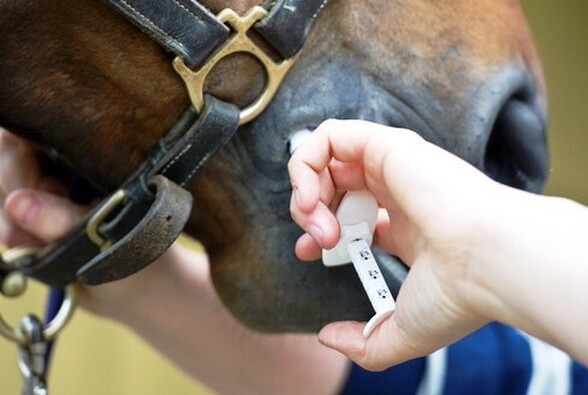What are faecal egg counts and why do we do them?
A faecal egg count (FEC) is an easy way to determine whether a horse needs to be drenched or not. It gives a reflection of a possible parasite burden and can sometimes give insight into which parasites your horse has.
Vets use a FEC to give horse owners a recommendation on drenching and sometimes will also use it to give recommendations on which product to use. A FEC can also be used to see how effective the last drench was by testing a sample 14 days post drenching.
The reason for promoting a FEC to be done at any time is to ensure drench resistance does not develop any further. At the moment, drench resistance in horses is low compared to other animal species. But overdrenching or using the wrong product may contribute to drench resistance. We need to make sensible decisions to keep drench resistance low for equine parasites, so your horses can be kept safe.
Why are there different drenches on the market?
Unfortunately, there is no general drench we can use on all parasites, as susceptibility to drenches differs between parasite species. Also, not all drenches are suitable for all age groups – foals can get health issues from using the wrong product in either the mare or the foal itself.
Things to consider:
- It may not be recommended to drench your horse when you think it needs it. Take a faecal sample in to be sure.
- Not all parasites react the same to drench, make sure you have the right drench for your horse by getting a recommendation by a vet or see the recommendations below.
- In order for the dewormer to work, we have to look at pasture management. This means keeping your parasitic contamination on the paddock low by removing all feces at least once a week. More targeted protocols are needed for different age groups or combinations of ages within a group.
Recommendations:
Faecal egg counts (FEC)
Doing a FEC is an effective way to give recommendations about drenching your horse. The clinic is able to do individual counts for individual horses, but can also do groups (for example multiple horses on the same paddock) by combining the sample and giving a result. Talk to your veterinarian if you need advice on how to get a faecal sample or how to get a mixed group sample. We recommend all horse owners to do a FEC before and after drenching.
Drenching
Horses in general:
Next to drenching on FEC guidance, it is recommended to drench horses regularly – at least twice a year with one drench in early spring (September/October) and the other one on guidance of a FEC (either late summer or autumn) but guidance can be easily obtained using a FEC. Usually, we recommend to drench horses with an egg count per gram (EPG) over 200. This will keep parasite burdens on pastures down.
Breeding mares:
It is always recommended to do a FEC in breeding mares to ascertain the parasite burden in the mare herself and see if she will increase the burden on the paddock before the foal is born.
Drenching pre-foaling:
If a mare is found positive on her FEC, drench her before she foals. To be safe, it is recommended that she is treated at least 2 months to 3 weeks before foaling to ensure the foal gets born on a clean paddock.
Drenching post-foaling:
It is not recommended to drench the mare after the foal is born, except for situations where parasite burdens either in the mare or on the paddock are really high. Talk to your vet about this.
Foals
Foals need a deworming product that is safe for them and is effective for the most common parasites seen in foals.
- 8-10 weeks: Treat for parascaris with a combination drench or Panacur (do not use a product with moxidectin in it).
- At weaning: Treat for strongyles with any combination drench.
- End of first grazing season: Treat with a combination drench.
A FEC is recommended before drenching this age group. It is an option to do a group FEC for yearlings run in the same paddock. Usually, if one animal in the group needs to be drenched it is recommended to do the rest as well.
Quarantine drenches
Put any ‘new’ arrivals in a separate paddock and do a FEC to ascertain the worm burden in the horse pre-drenching. Use a triple-active drench for these horses like Equitak Excel or Ultra Mox. After drenching, repeat the FEC in 14 days to ascertain the effectiveness of the drench before you mix the new arrival with the rest of the horses.
Other measures
- Clean faeces out of paddocks regularly. This will keep parasite burden low on the paddock and may result in less drenching needed.
- Harrowing can be beneficial when it’s hot and dry.
- Grazing sheep/cattle to clean up pastures. This works well for most parasites, but not for trichostrongylus.
- Plowing and reseeding will only work when you are deep plowing.
- Rotational grazing can keep worm burdens low, shift horses to a ‘new/clean’ paddock every 3 weeks. At least 4 clean paddocks are needed to have 1 paddock stand empty for at least 6-9 weeks.

